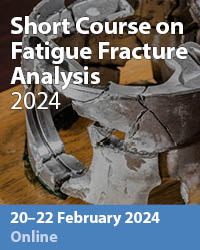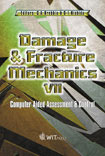Crack Characteristics Of Residual Stress Fields
Price
Free (open access)
Transaction
Volume
37
Pages
Published
2002
Size
548 kb
Paper DOI
10.2495/DM020151
Copyright
WIT Press
Author(s)
P Brož
Abstract
A finite element algorithm implemented in plane stress condition utilizing isoparametric elements may predict fatigue crack closure behaviour of fatigue cracks in residual stress fields; the finite element methodology in elastic-plastic formulation employing high order elements is established. The crack opening and closing characteristics via a compressive residual stress field is considered to be affected by the magnitude of applied load and the crack tip position. By dint of a compressive residual stress field, three variant types of crack opening behaviour, namely normal, unsymmetric partial and symmetric partial ones are studied. At the same time, the partial crack opening stress intensity factor inclusive of the opening effect is suggested to predict the fatigue crack propagation. The boundary element method of modelling crack propagation in the presence of residual stress fields is demonstrated. The approach shown is an elastoplastic fracture mechanics concept for crack growth simulation with a nonlinear J-integral being employed in the fatigue life analysis. The eventuality when the pre-stress is applied to specimens pre-cracked is also encompassed. 1 Introduction When used an unloading elastic compliance method to crack closure measurements, Kikukawa, Jon0 and Tanaka [l] revealed that in the transition zone the dependence of the load x displacement is of a shape out of the common run. That is, the loading curve has the normal bi-linear form whereas it is possible to approach the unloading upper curve being a straight-line transition linking up the initial and final straight lines of the unloading attribute. It was also devise that the unusual shape of the curve could be applied to the partial crack
Keywords





